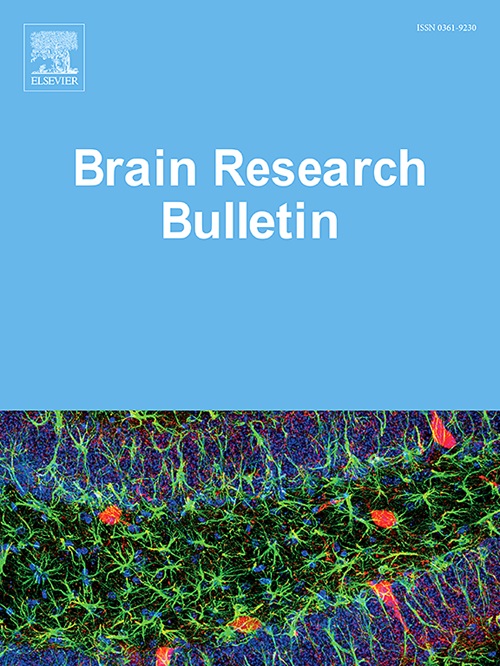Association of cortical macrostructural and microstructural changes with cognitive performance and gene expression in subcortical ischemic vascular disease patients with cognitive impairment
IF 3.5
3区 医学
Q2 NEUROSCIENCES
引用次数: 0
Abstract
Objective
Previous researches have demonstrated that patients with subcortical ischemic vascular disease (SIVD) exhibited brain structure abnormalities. However, the cortical macrostructural and microstructural characteristics and their relationship with cognitive scores and gene expression in SIVD patients remain largely unknown.
Methods
This study collected 3D-T1 and diffusion tensor imaging data from 30 SIVD patients with cognitive impairment (SIVD-CI) and 32 normal controls. The between-group comparative analyses of cortical thickness, area, volume, local gyrification index (LGI), and mean diffusivity (MD) were conducted with a general linear model. Moreover, the associations between the significant neuroimaging values and the cognitive scores and gene expression values from Allen Human Brain Atlas database were evaluated using partial least squares regression and partial correlation analysis.
Results
SIVD-CI patients showed significant decreases in cortical thicknesses across 18 regions, cortical volumes across three regions, and cortical LGI across five regions, as well as significant increases in cortical MD across five regions (P < 0.05). The significantly reduced cortical thicknesses of the right insula, left superior temporal gyrus, left central anterior gyrus, and left caudal anterior cingulate cortex, as well as the significantly reduced cortical LGI in left caudal anterior cingulate cortex, were significantly positively correlated with different cognitive scores (P < 0.05). Furthermore, the abnormal cortical structural indicators were found to be significantly related to nine risk genes (VCAN, APOE, EFEMP1, SALL1, BCAN, KCNK2, EPN2, DENND1B and XKR6) (P < 0.05).
Conclusions
The specific cortical structural damage may be related to specific cognitive decline and specific risk genes in SIVD-CI patients.
求助全文
约1分钟内获得全文
求助全文
来源期刊

Brain Research Bulletin
医学-神经科学
CiteScore
6.90
自引率
2.60%
发文量
253
审稿时长
67 days
期刊介绍:
The Brain Research Bulletin (BRB) aims to publish novel work that advances our knowledge of molecular and cellular mechanisms that underlie neural network properties associated with behavior, cognition and other brain functions during neurodevelopment and in the adult. Although clinical research is out of the Journal''s scope, the BRB also aims to publish translation research that provides insight into biological mechanisms and processes associated with neurodegeneration mechanisms, neurological diseases and neuropsychiatric disorders. The Journal is especially interested in research using novel methodologies, such as optogenetics, multielectrode array recordings and life imaging in wild-type and genetically-modified animal models, with the goal to advance our understanding of how neurons, glia and networks function in vivo.
 求助内容:
求助内容: 应助结果提醒方式:
应助结果提醒方式:


